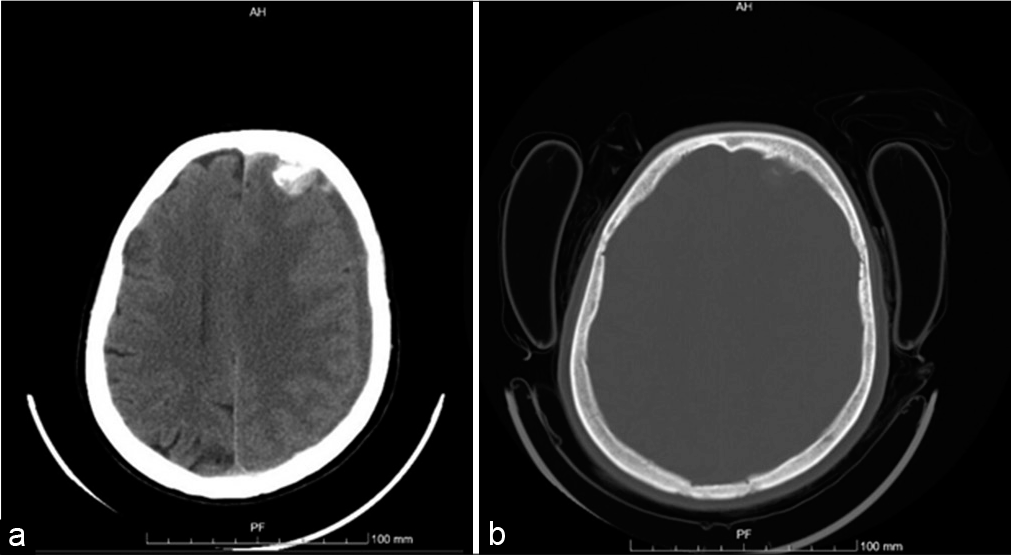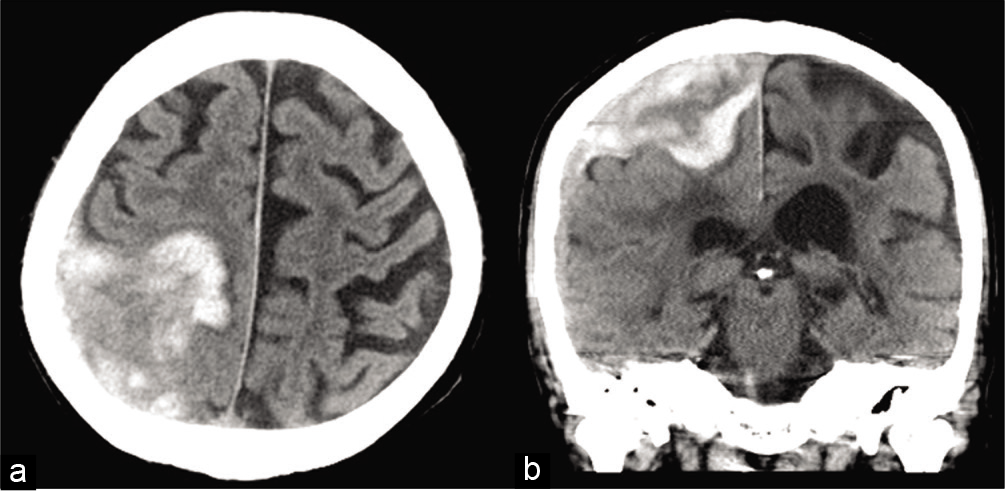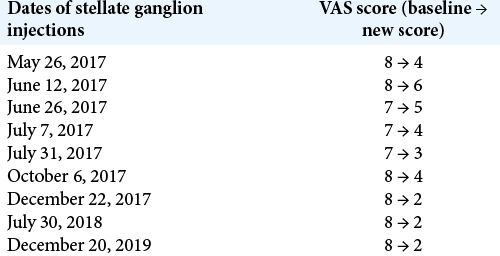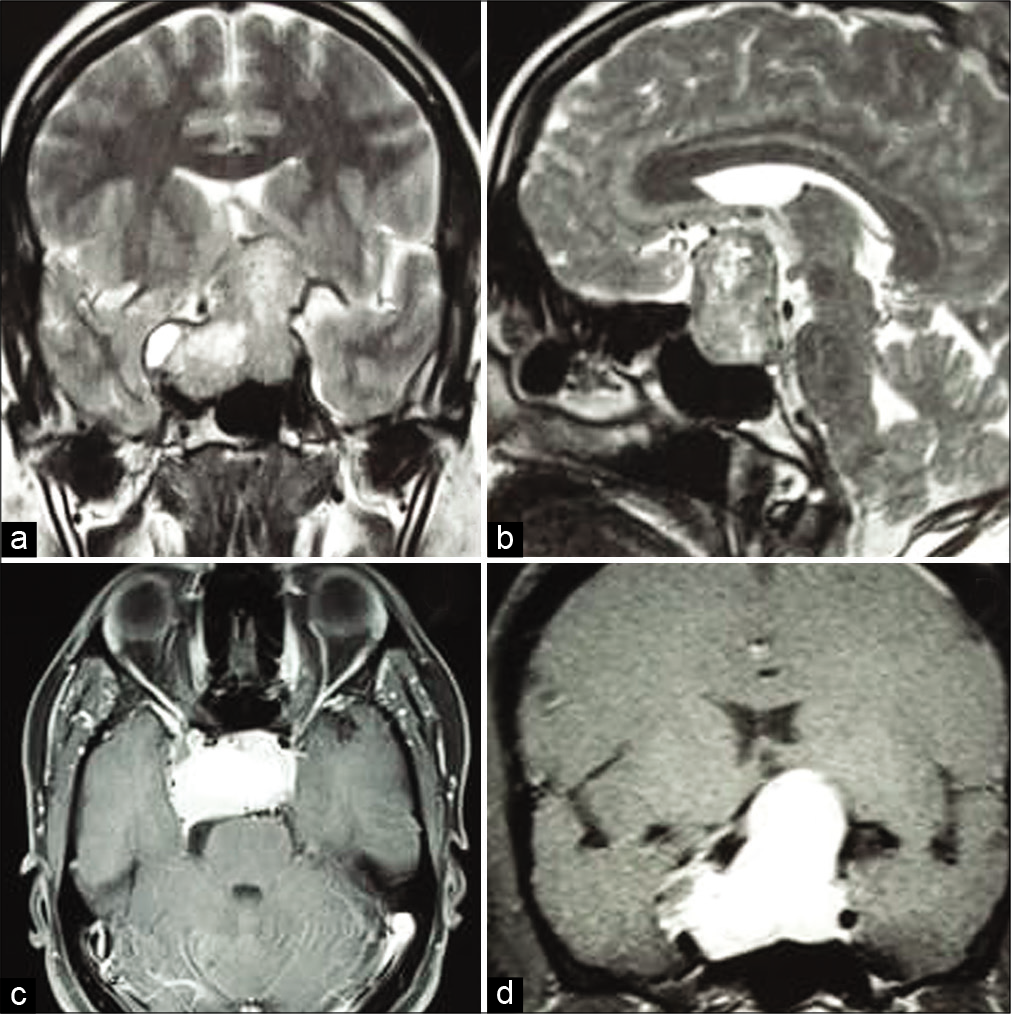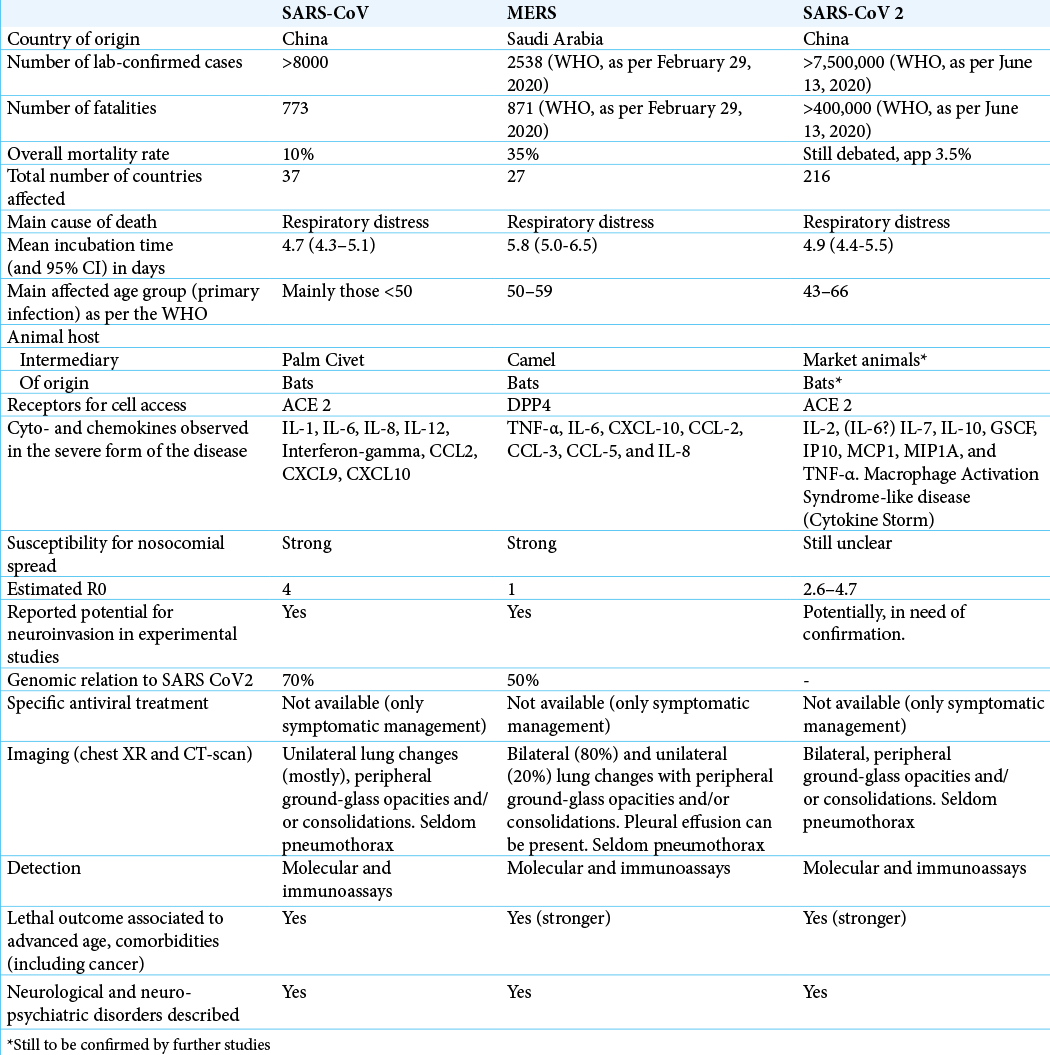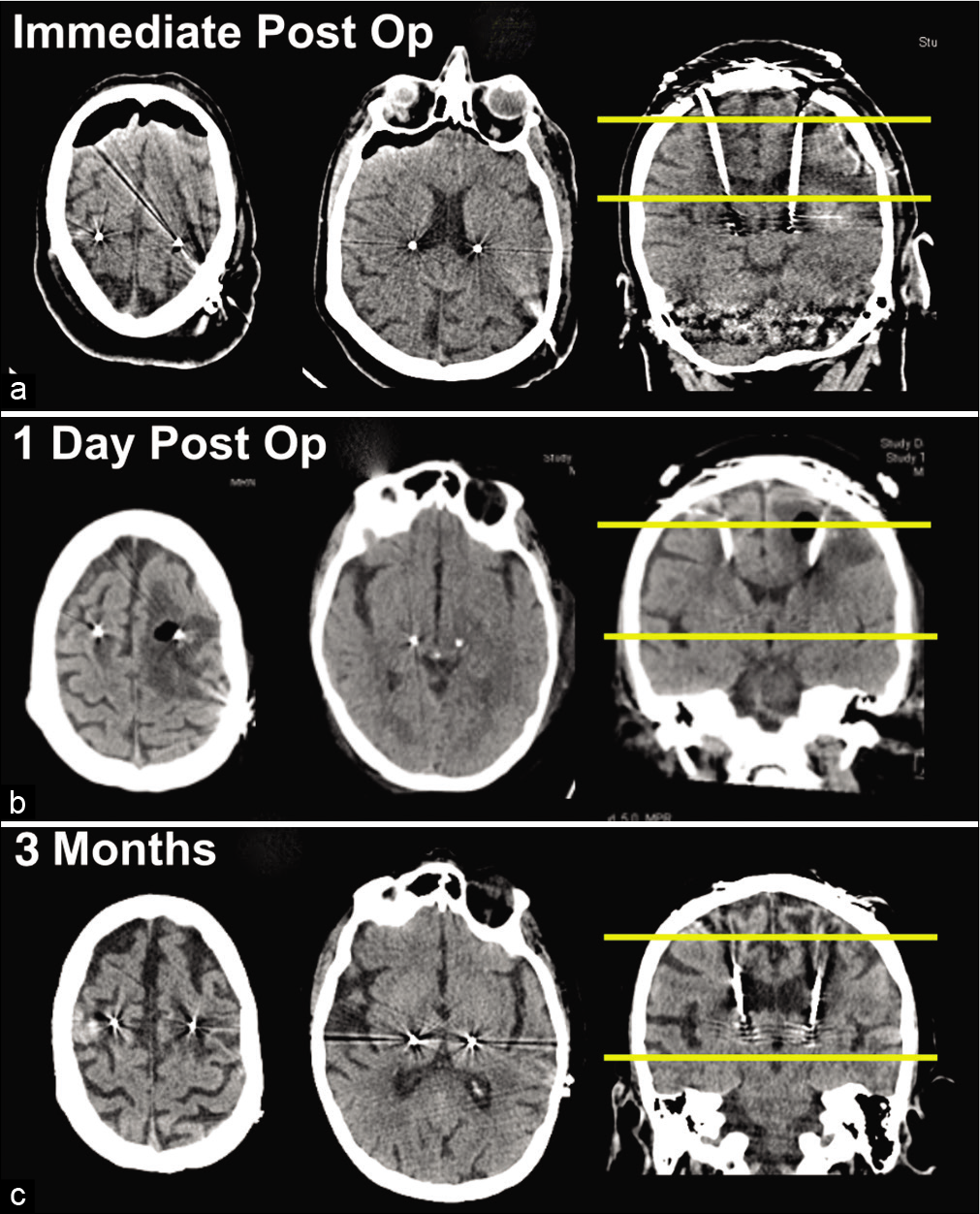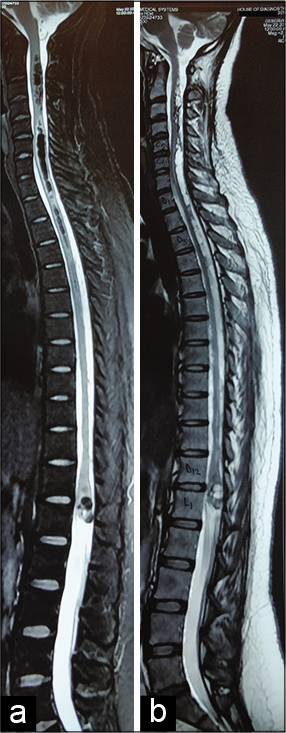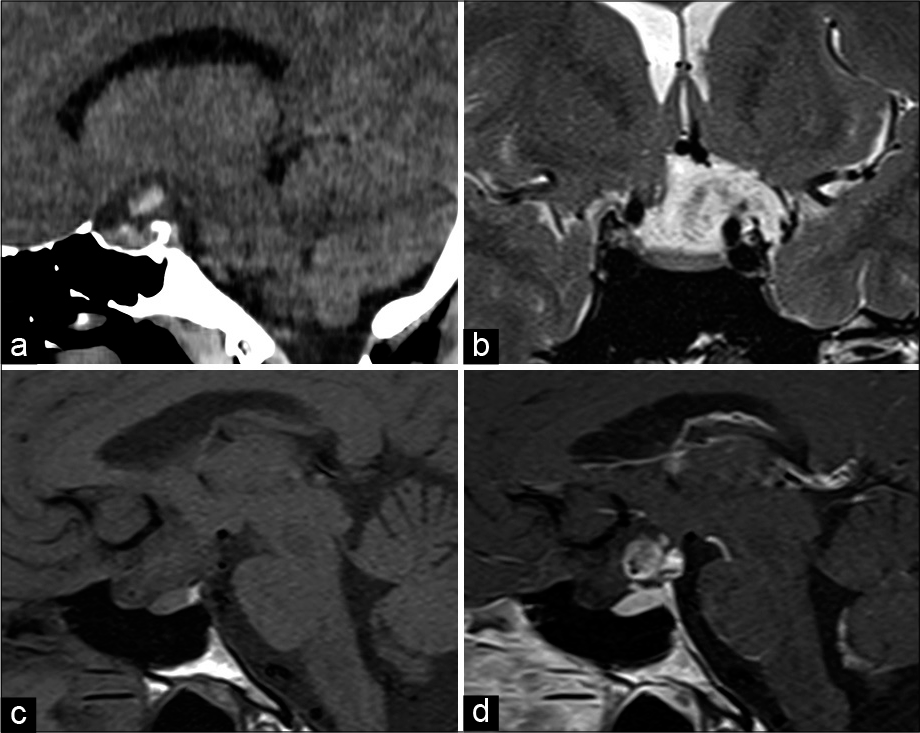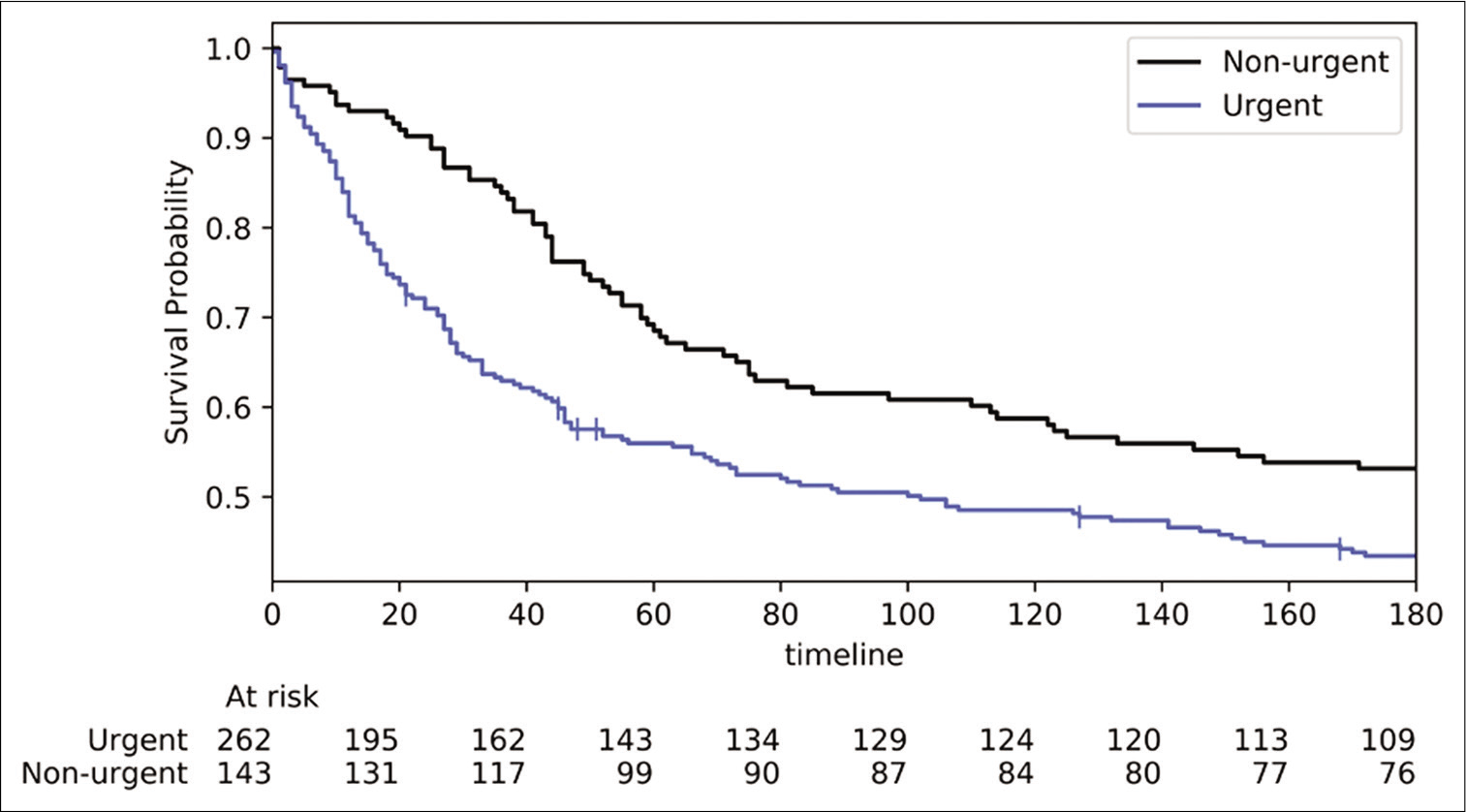Meningioma-related subacute subdural hematoma: A case report
Date of publication: 29-Aug-2020
Background: Meningiomas are the most frequent benign head tumors, although spontaneous hemorrhage is a rare form of presentation of such lesions. Of all possible bleeding locations associated with them, the subdural space is one of the most uncommon, with very few cases reported worldwide.
A convexity meningioma presenting with an acute subdural hematoma
Date of publication: 29-Aug-2020
Background: Meningiomas presenting with acute subdural hematomas are extremely rare. To the best of our knowledge, only 45 cases have been reported to date. We report on a case of a meningioma mimicking an acute subdural hematoma as well as a thorough literature review.
Management of CRPS secondary to preganglionic C8 nerve root avulsion: A case report and literature review
Date of publication: 29-Aug-2020
Background: Cervical nerve root avulsion is a well-documented result of high-velocity motor vehicle accidents (MVAs). In up to 21% of cases, preganglionic cervical root avulsion can result in a complex regional pain syndrome (CRPS) impacting the quality of life for patients already impaired by motor, sensory, and autonomic dysfunction. The optimal treatment strategies include repeated stellate ganglion blocks (SBGs).
Rare neurohypophyseal tumor presenting as giant pituitary macroadenoma with cavernous sinus invasion – A case report and review of literature
Date of publication: 29-Aug-2020
Background: Granular cell tumors (GCTs) of the pituitary are rare tumors of posterior pituitary that can present as giant pituitary macroadenoma due to the slow indolent growth of the tumor. We are reporting this case due to the rarity of GCT and usually these tumors are confined to the suprasellar region since they are arising from the pituitary stalk. GCTs that attain such giant size with cavernous sinus invasion are still rarer.
Considerations for future novel human-infecting coronavirus outbreaks
Date of publication: 29-Aug-2020
Abstract
Up until, June 13, 2020, >7,500,000 cases of severe acute respiratory syndrome coronavirus 2 (SARS-CoV-2) and >400,000 deaths, across 216 countries, have been confirmed by the World Health Organization (WHO). With reference to the two previous beta-CoV outbreaks (SARS-CoV and middle east respiratory syndrome [MERS]), this paper examines the pathophysiological and clinical similarities seen across all three CoVs, with a special interest in the neuroinvasive capability and subsequent consequences for patients with primary or metastatic brain tumors. More widely, we examine the lessons learned from the management of such large-scale crises in the past, specifically looking at the South Korean experience of MERS and the subsequent shift in disaster management response to SARS-CoV-2, based on prior knowledge gained. We assess the strategies with which infection prevention and control can, or perhaps should, be implemented to best contain the spread of such viruses in the event of a further likely outbreak in the future.
Case report of hyperacute edema and cavitation following deep brain stimulation lead implantation
Date of publication: 29-Aug-2020
Background: Postoperative cerebral edema around a deep brain stimulation (DBS) electrode is an uncommonly reported complication of DBS surgery. The etiology of this remains unknown, and the presentation is highly variable; however, the patients generally report a good outcome.
Long segment cervicothoracic intramedullary dermoid with concomitant conal lesion – A case report
Date of publication: 29-Aug-2020
Background: Spinal dermoid cysts are benign tumors that result from congenital or acquired ectodermal inclusions. Long segment intramedullary involvement of the spinal cord is exceedingly rare, and there are only a handful of case reports found in the literature.
Glioma del nervio óptico en paciente adulto con presentación hemorrágica tratado mediante abordaje endoscópico transesfenoidal extendido
Date of publication: 21-Aug-2020
Introducción: El glioma del nervio óptico es una entidad de muy baja incidencia en pacientes adultos, lo cual impide tener suficiente información sobre historia natural y conducta terapéutica en este grupo etario.
Comparación del tratamiento quirúrgico y endovascular de aneurismas del segmento comunicante posterior
Date of publication: 21-Aug-2020
Antecedentes: Los aneurismas del segmento comunicante posterior representan aproximadamente 25% de todos los aneurismas intracraneales, y el 50% de los aneurismas de la arteria carótida interna. El objetivo fue evaluar la eficacia del tratamiento quirúrgico y endovascular en el manejo de aneurismas de esta localización.
The impact of urgent neurosurgery on the survival of cancer patients
Date of publication: 21-Aug-2020
Background: Patients with cancer are subject to all neurosurgical procedures of the general population, even if they are not directly caused by the tumor or its metastases. We sought to evaluate the impact of urgent neurosurgery on the survival of patients with cancer.


